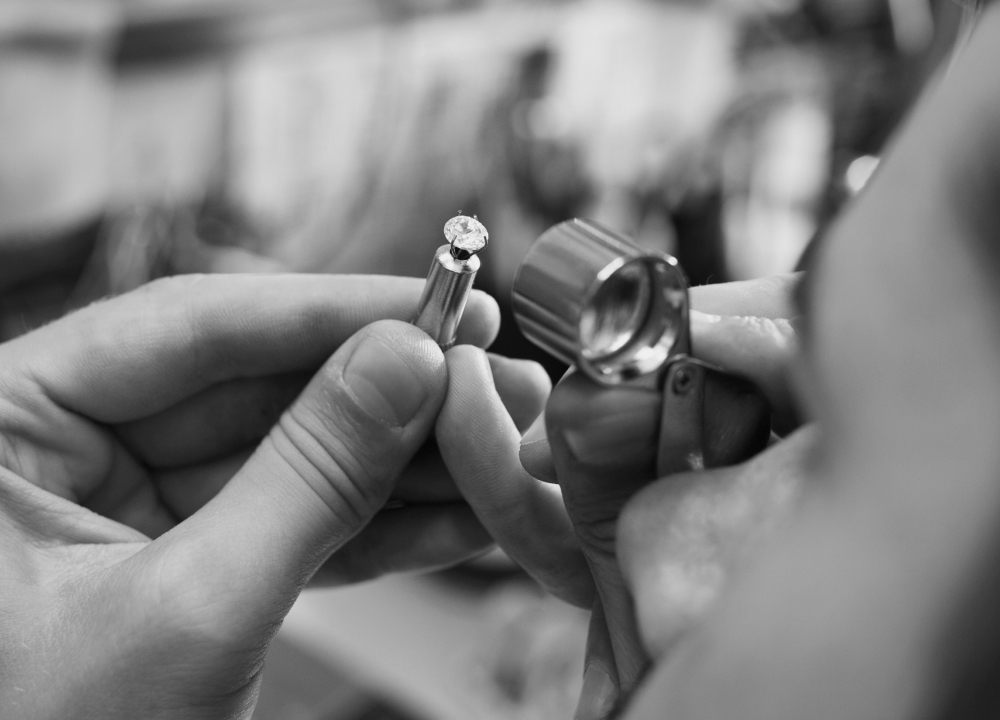
By Leanne Kemp
The diamond industry is one of the largest in the world and is recognised as a symbol of wealth, beauty and commitment. However, the impact on the environment and society has been a cause for concern for many years. The race to a brighter future in the diamond industry is now underway, and the focus is on sustainability. Let’s examine the current state of sustainability in the diamond industry and explore the challenges faced by the industry in achieving sustainable practices.
The first challenge facing the diamond industry is the impact of mining operations on the environment. The extraction of diamonds from the earth requires heavy machinery, energy and water, and the resulting environmental damage can be significant. The industry is also responsible for large amounts of waste, including toxic chemicals and other hazardous materials. Additionally, the diamond industry has been criticised for impacting the local communities where mines are located. Many communities suffer from poverty, unemployment and lack of access to basic services, such as clean water and healthcare.
To address these challenges, the industry is taking steps to improve sustainability practices. One of the most innovative initiatives is the development of sustainable mining practices, which aim to minimise the impact of mining operations on the environment and local communities. For example, the Everledger platform is designed to track the provenance of diamonds and ensure they are ethically sourced. The platform’s transparency reports incorporate origin, provenance, impact stories and renewable energy, making it easier for consumers to understand the story behind their diamonds.
Another important initiative is the focus on renewable energy in the diamond industry. Many companies are investing in renewable energy sources, such as solar and wind power, to reduce their carbon footprint and improve sustainability. Renewable energy is not only good for the environment, but it is also cost-effective and helps companies to reduce operating costs. Additionally, many companies use sustainable packaging materials, such as biodegradable plastics, to reduce waste and improve sustainability.
The diamond industry is also working to educate consumers about the importance of sustainability. Many companies are providing educational materials and programs to help consumers understand the impact of their diamond purchases on the environment and local communities. This type of education is crucial in promoting sustainable practices and encouraging consumers to make more environmentally conscious purchases.
Whilst the diamond industry has been traditionally dominated by natural diamonds, in recent years, lab-grown diamonds have emerged as a popular alternative. Lab-grown diamonds are created in a controlled laboratory environment, using advanced technology to mimic the conditions in which natural diamonds are formed. These diamonds are chemically, physically, and optically identical to natural diamonds, and they offer several benefits over natural diamonds.
One of the biggest benefits of lab-grown diamonds is their environmental impact. Natural diamonds are formed over millions of years and require extensive mining operations, which can have a significant impact on the environment. The diamond mining process often involves the use of large amounts of resources, which can harm the surrounding environment. In contrast, lab-grown diamonds in a controlled laboratory environment eliminate the need for extensive mining operations and the associated environmental impact.
Another advantage of lab-grown diamonds is their affordability. Natural diamonds are expensive because they are rare and difficult to obtain. The cost of mining and the limited supply of natural diamonds contributes to their high price. Lab-grown diamonds, on the other hand, are produced in a controlled laboratory environment, which makes them much more affordable than natural diamonds. This affordability has made lab-grown diamonds a popular alternative for consumers who want to purchase a diamond without breaking the bank.
In terms of quality, natural diamonds and lab-grown diamonds are equally impressive. Both types of diamonds are available in a range of sizes, colours, and clarity grades, and both can be cut, polished, and set into jewellery. However, one advantage of lab-grown diamonds is that they are often grown to specific specifications, which makes it easier for consumers to find a diamond that meets their exact requirements.
While lab-grown diamonds have many benefits over natural diamonds, there are also some challenges associated with this new type of diamond. One of the biggest challenges is the lack of standardisation in the lab-grown diamond industry. Unlike natural diamonds, which are certified by independent organisations such as the Gemological Institute of America (GIA), there is no standard certification process for lab-grown diamonds. This can make it difficult for consumers to determine the quality and authenticity of a lab-grown diamond and make it challenging for retailers to source high-quality lab-grown diamonds.
When it comes to lab-grown diamonds, there are two main methods of production: Chemical Vapour Deposition (CVD) and High-Pressure High Temperature (HPHT). Both methods have unique advantages and disadvantages, but when it comes to sustainability, CVD has the edge over HPHT.
CVD diamonds are produced by depositing carbon atoms onto a substrate in a vacuum environment. This method is less energy-intensive compared to HPHT, which requires high temperatures and pressure. Additionally, CVD production requires fewer raw materials, making it a more sustainable option in terms of resource consumption.
However, the sustainability of CVD diamonds is not without its challenges. CVD production requires gases such as methane, hydrogen, and nitrogen, which are harmful to the environment if not properly managed. In addition, CVD production still requires a significant amount of energy, making it important for the industry to find more sustainable sources of energy.
On the other hand, HPHT diamonds are produced by applying high pressure and high temperatures to carbon, recreating the conditions in the Earth’s mantle where natural diamonds are formed. This method is more energy-intensive compared to CVD, which is one of its major disadvantages. Additionally, HPHT production can result in the release of carbon dioxide and other greenhouse gases, which can contribute to climate change.
We are all living contributors to the future of the diamond industry: constantly shaped by the growing demand for sustainability and ethical sourcing. Both natural and lab-grown diamonds offer their benefits and challenges, and the industry needs to continue to find more sustainable methods of production to reduce their impact on the environment and society. The CVD method of growing diamonds is considered more sustainable compared to HPHT, but both methods still have sustainability challenges that need to be addressed. The industry needs to be proactive in embracing new technologies and innovative solutions to create a brighter future for the industry and to meet the expectations of eco-conscious consumers. The continued development of lab-grown diamonds and increased focus on sustainability is sure to transform the industry in the coming years. The industry must embrace these changes and work towards a future that prioritises sustainability, ethics, and responsible sourcing to create a brighter future for everyone involved.
The future of sustainability in the diamond industry is bright. The industry is taking steps to address the challenges it faces and is working to promote sustainable practices. The focus is on improving the impact of mining operations on the environment and local communities, reducing waste, and investing in renewable energy.

Leanne Kemp
CEO, Everledger
everledger.io
Further reading: